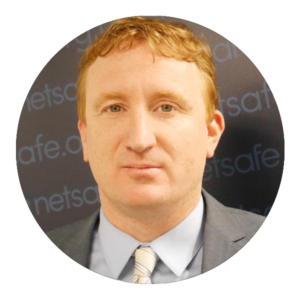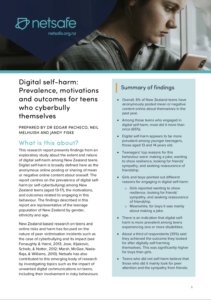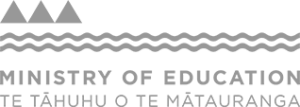CEO Welcome
Quarter four was another busy quarter for the team. We saw an increase in overall reports to Netsafe, particularly in scam and fraud reports. We will release our full year results for 2018/19 in our annual report, but for now I can share that Netsafe has seen a 35.9 percent increase in reports compared to the previous year.
Netsafe was also appointed to Facebook’s Global Safety Advisory Board. Serving on this board enables us to better represent the interests of New Zealand, and to continue our work to create a safer more positive online experience for New Zealanders.
Our research team attended the Global Kids Online Network project meeting in Italy. They presented their initial findings using the Global Kids Online research methodology. This research produced New Zealand’s first ever report into digital self-harm in Kiwi teenagers. We also attended the INHOPE annual general meeting in Ireland to help progress the work to combat child sexual abuse material.
We are still receiving reports related to the Christchurch terrorist attacks although they are declining in frequency. Work related to the attacks continues to be a focus for us. The team are working closely with key stakeholders to ensure we are doing everything we can to help.
We will be sharing more about this work at the eSafety19 conference from 11-12 September. Netsafe are again co-hosting with Australia’s Office of the eSafety Commissioner. This year’s event is returning to Sydney and our members will receive a discounted ticket rate. If you are not yet a Netsafe Member, there’s still time to apply.
I hope to see you in Sydney, but if the location is a hurdle to your attendance I will be providing an update in our next quarterly report.
Regards,
Martin Cocker
CEO, Netsafe

Director Update
Sean Lyons, Director of Education & Engagement
Our education sector and public awareness programmes help connect New Zealanders to online safety information. We do this so people feel empowered to take advantage of the various digital opportunities available to them, and so they know we are here to help if something does go wrong online.
In Q4, we reviewed our key programmes to ensure we continue to provide tools and information that assists Kiwis. One of the main initiatives to be reviewed was the Netsafe Schools programme. As a result of this work we piloted some changes to the programme at the Netsafe Live event in Palmerston North. The revamped Netsafe Schools programme will soon be launched, and you should notice it has a more inclusive model with relationship, growth and sharing at the core.
There has been an increase in the numbers of schools contacting the Helpline after the Christchurch attacks. This has kept the Helpline busy and in turn the Education team as we’ve followed up on some of the cases. We’ve worked with schools to develop and enhance online safety, citizenship and wellbeing, and to support greater confidence among staff in responding to online incidents.
You may have also heard more about Netsafe as we’ve been using different channels to promote our service and educate people about how they can minimise their own online risks. If you don’t already, you can keep up with our activities by following us on Facebook, Twitter, LinkedIn or Instagram. If you have any ideas on how we could work together to better support internet users, please get in contact.

Quarterly Results
Overview
Between April and June 2019, Netsafe has received 6274 reports. This is 25.3 percent increase compared to the same period in 2018.
TOTAL REPORTS (+5.3%*)
PERSONAL HARM COMPLAINTS (-21.5%*)
SCAM & FRAUD REPORTS (+24.8%*)
OTHER REPORTS (-38.2%*)
* Percentage change based on reports made to Netsafe between 1 January until 31 March, 2019
Reports by age group
Overall reports to Netsafe by age group.
12.7%
0-21
30.7%
22-40
33.7%
40-64
22.9%
65+
Reports by gender
55.5%
FEMALE
3.2%
GENDER DIVERSE
41.3%
MALE
Personal Harm Reporting
Between April and June 2019, Netsafe received 795 personal harm reports. This is a 55.4 percent increase from the same period in 2018. The top personal harm categories for the quarter were:
Reported breaches of communications principles in complaints under the Harmful Digital Communications Act*
* Cases often involve breaches of more than one communications principle
Scam and Fraud Reporting
Between April and June 2019, $6.14 million in scam and fraud losses was reported to Netsafe in 924 reports. The average reported loss was $6,648.
Scam & fraud snapshot
$6.14M
REPORTED LOSSES
924
REPORTS WITH $ LOSSES
$6,648
AVERAGE LOSS
Top scam categories reported
Products and services fraud overview
Over the Easter period, Netsafe saw a spike in reports about scammers using well-known retail brands in text and email scams. Often people are told they have won a prize (e.g. supermarket voucher or a mobile phone) or that they could win a prize by completing an online survey. The online survey asks for personal details and sometimes credit card details to pay for the shipping of the prize.
While Netsafe received a large influx in reports, the reported financial losses to this scam have been low.
Education & Engagement
Netsafe is committed to providing practical tools, support and advice to help internet users. This quarter, we released New Zealand’s first ever research into digital self-harm in New Zealand teenagers, supported Privacy Week and Bullying Free Week, directly engaged with more than 700 educators, provided proactive and reactive media commentary and talked to more than 1500 parents.
Netsafe Media Releases and Public Engagement
Press release
Digital self-harm affecting NZ teens, new research report reveals
Media release: 2 May 2019
Media commentary
Our CEO talked about the blocking of 300, 000 searches for pornographic material in NZ schools, educating kids about pornography and the idea of banning mobiles in schools.
Netsafe Schools Review
The Netsafe Schools programme helps schools establish, develop and promote online safety, digital citizenship and wellbeing. The revamped programme is coming soon.
Netsafe Research Releases

Digital self-harm: prevalence, motivations and outcomes for teens who bully themselves online
About Netsafe
Netsafe is one of the world’s leading online safety organisations. We are an independent non-profit that provides reactive and proactive online safety support and education to everyone in New Zealand.
By taking a technology-positive stance and using a pragmatic approach, we work to achieve the best outcomes for users. We provide practical tools, support and advice for managing online challenges and are available seven days a week to help.
Find out more at www.netsafe.org.nz
Become a Netsafe member
Netsafe is incorporated as a society and a charity. Our members represent a variety of backgrounds and countries, but all have one thing in common – an interest in advancing the online safety cause. Membership is free and easy to apply for. Find out more about being a Netsafe member or apply by completing our online form.
Become a member
Report Data
The data in this report represents the data available at the end of the quarter. Information related to the reports made to Netsafe reflect high-level trends, and do not include easily identifiable information about specific reports/complaints.
If you have any queries about the information in this report, please email [email protected]


